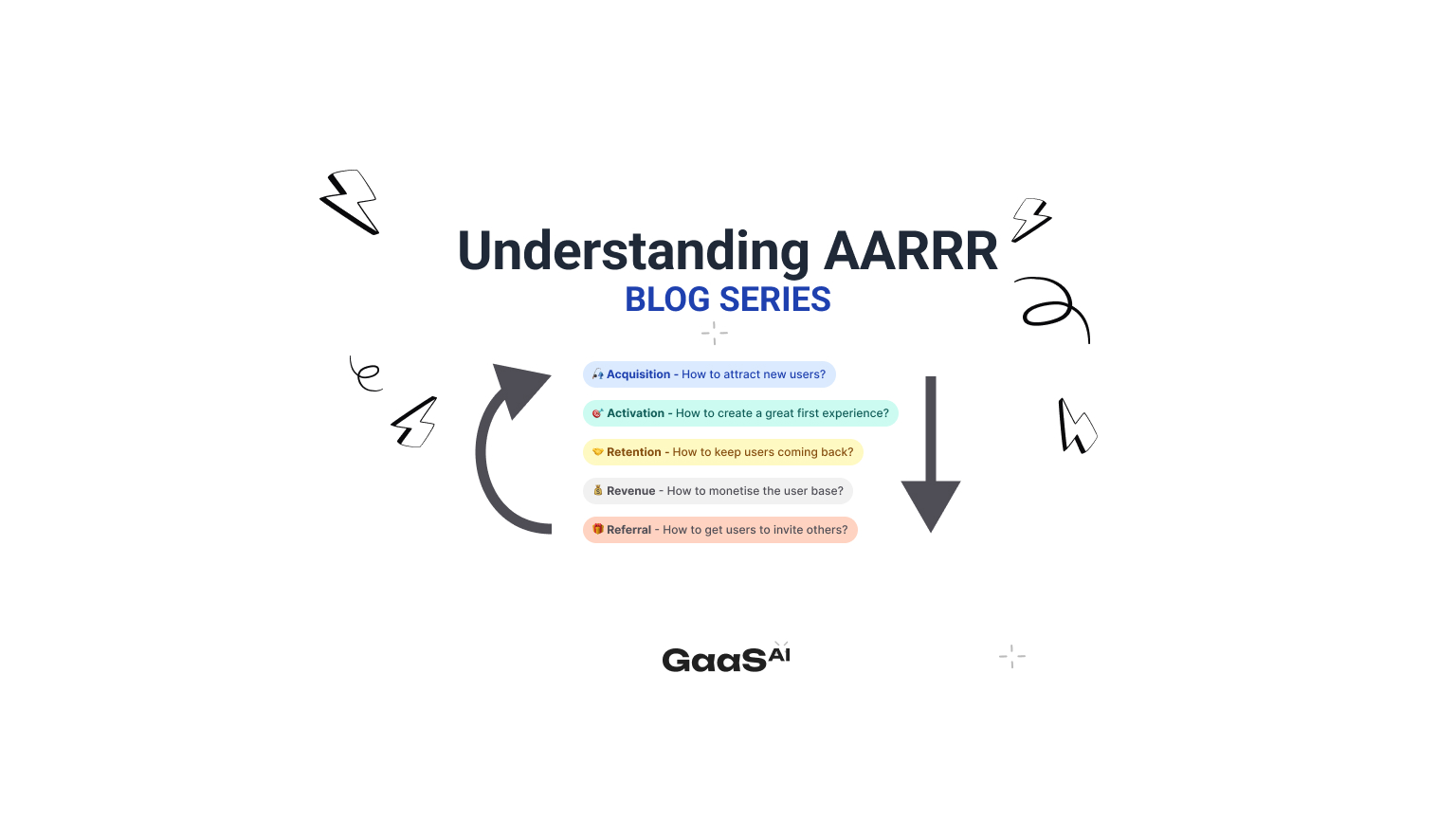In the world of product growth and marketing strategies, few frameworks have gained as much traction as AARRR, commonly known as Pirate Metrics. This article will introduce you to AARRR, its origins, and why it’s become a crucial tool for businesses focused on growth hacking and customer acquisition.
Here’s what we’ll be covering in this series:
In the upcoming articles in this series, we’ll dive deep into each stage of the AARRR framework. We’ll explore specific metrics, strategies for optimisation, and real-world case studies for each stage.
Step 1: ACQUISITION: How to attract new users
Step 2: ACTIVATION: How to create a great first experience
Step 3: RETENTION: How to keep users coming back
Step 4: REVENUE: How to monetise your user base
Step 5: REFERRAL: How to turn users into advocates
Step 6: PUTTING IT ALL TOGETHER: Building your growth engine
The Birth of AARRR: Dave McClure’s Pirate Metrics
AARRR was introduced by Dave McClure, a prominent entrepreneur and founder of 500 Startups, during his 2007 presentation “Startup Metrics for Pirates” at the Ignite Seattle conference.
McClure, recognising the need for a simple yet comprehensive framework to track startup growth, developed AARRR to help businesses focus on the metrics that truly matter. The name “Pirate Metrics” comes from the sound the acronym makes when pronounced – a playful touch that made the framework memorable and approachable.
Understanding AARRR: A Framework for Growth
At its core, AARRR is a customer-centric framework that breaks down the customer lifecycle into five key stages:
- (Awareness)
- Acquisition
- Activation
- Retention
- Revenue
- Referral
Each stage represents a critical point in the customer’s journey, from first discovering your product to becoming a loyal advocate.
Since its inception, many practitioners have added a sixth stage: Awareness, which precedes Acquisition. This addition recognizes the importance of brand visibility in today’s crowded digital landscape.
AARRR differs from traditional marketing funnels by providing a more holistic view of the customer journey, emphasising post-acquisition stages that are crucial for sustainable growth.
The Importance of AARRR in Growth
In today’s data-driven business environment, metrics-driven growth is essential. AARRR provides several key benefits:
- Focus on critical aspects of the customer journey
- Clear measurement of progress and areas for improvement
- Optimisation of resources for maximum impact
- Alignment of product development with growth metrics
AARRR is particularly valuable in product-led growth strategies, where the product itself drives customer acquisition, conversion, and expansion.
The Six Stages of (A)AARRR
Let’s examine each stage of the AARRR framework:
- Awareness: Reaching your target audience. Key metrics: Brand mentions, search volume, social media engagement
- Acquisition: Converting awareness into active interest. Key metrics: Website visits, app downloads, sign-up page views
- Activation: Delivering the first “aha” moment to users. Key metrics: Completed onboarding processes, use of key features
- Retention: Keeping users engaged and returning. Key metrics: Daily/monthly active users, churn rate, frequency of use
- Revenue: Monetising user engagement. Key metrics: Conversion rate, average revenue per user (ARPU), customer lifetime value (CLV)
- Referral: Turning users into advocates. Key metrics: Referral rate, viral coefficient, Net Promoter Score (NPS)
AARRR in Product, Business & Marketing Strategy
AARRR isn’t just a set of metrics – it’s a strategic framework that can inform multiple aspects of your business:
- Aligning metrics with overall business objectives
- Informing product development priorities
- Guiding resource allocation for maximum growth impact
- Integrating with other frameworks like OKRs or Lean Startup principles
Key Considerations
Implementing AARRR requires the right tools and approach. Many analytics platforms can help track AARRR metrics, but the real challenge often lies in creating a data-driven culture where these metrics inform decision-making at all levels.
Common challenges include:
- Data silos
- Lack of clear ownership for metrics
- Difficulty in accurately attributing user actions to specific stages
Overcoming these challenges requires cross-functional collaboration and a commitment to data-driven decision making.
Looking Ahead: Mastering AARRR
In the upcoming articles in this series, we’ll dive deep into each stage of the AARRR framework. We’ll explore specific metrics, strategies for optimisation, and real-world case studies for each stage.
Stay tuned as we embark on this journey to master the Pirate Metrics and drive meaningful growth for your product and business.
Ready to Kickstart Your Growth Journey?
Ready to set sail toward better growth? Pick your first AARRR pillar, define a Playbook and get started with targeted Growth Plays.
No more juggling multiple tools or drowning in spreadsheets. Our platform brings everything together, giving you a clear picture of your progress and helping you make smarter decisions.
- Clarity: All critical information in one view
- Alignment: Keeps everyone on the same page
- Focus: Highlights what matters most for your growth
- Adaptability: Easily adjust your strategy as needed
- Assistance: AI agent for help and continuous learning
Ready to stop guessing and start growing? Dive into your first Growth Play with GaaSAI today. Let’s turn your growth goals into reality, one Play at a time.
